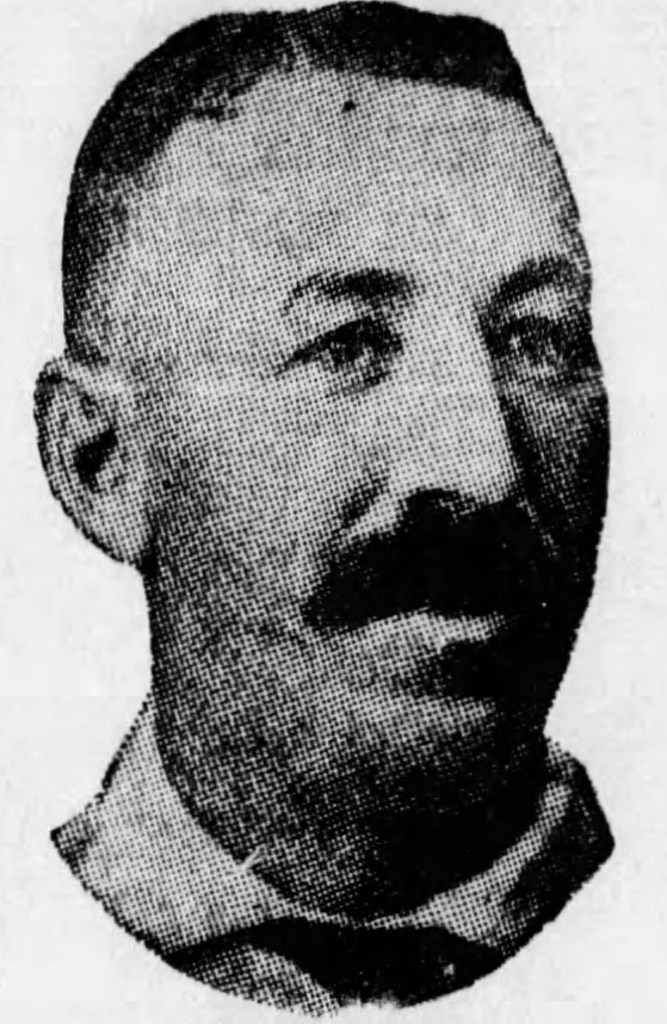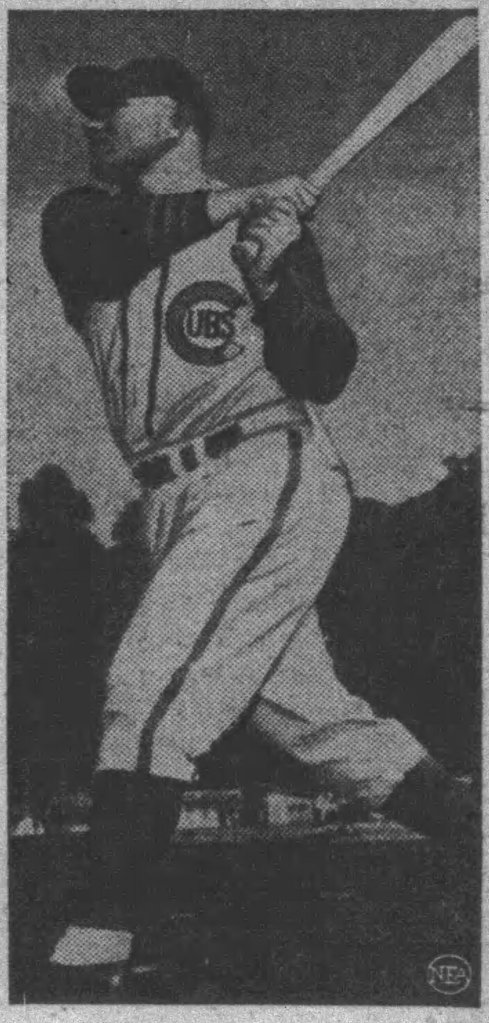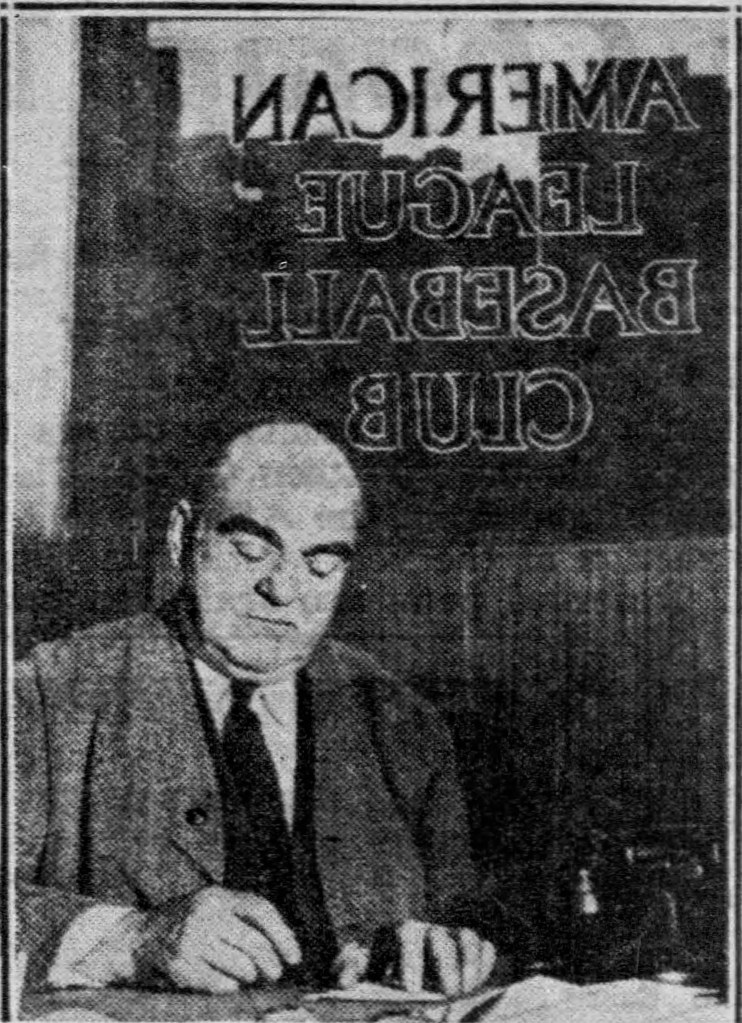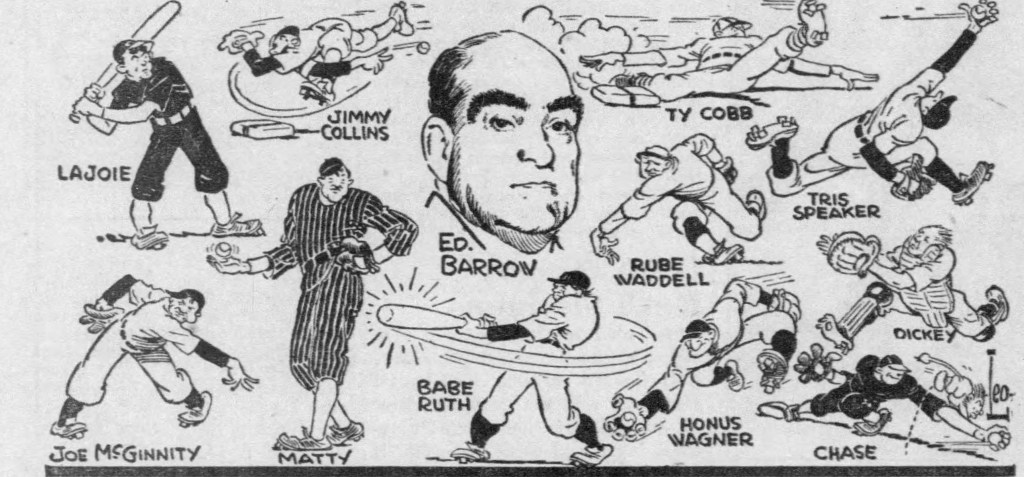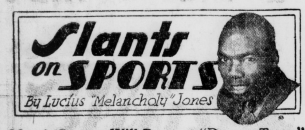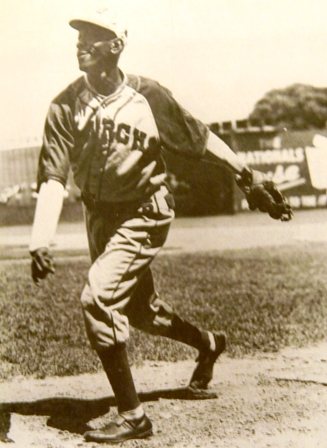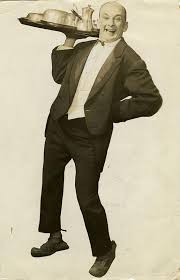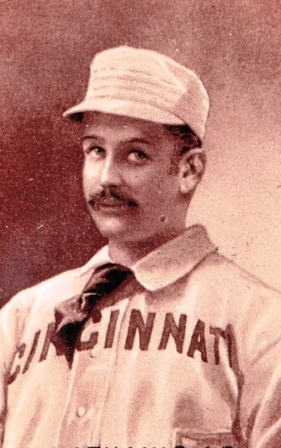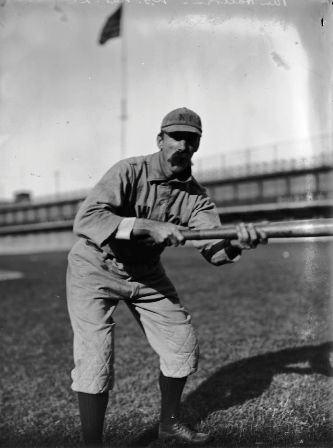Satchel Paige told Dave Condon of The Chicago Tribune that early in 1965, with the help of his wife Lahoma, and 17-year-old daughter Pamela he “wrote letters to everyone in baseball just looking for a steady job. Anything.”
After not one professional team responded, the spring and early summer were like most during his 40-year career as a pitcher—Paige traveled wherever there was a chance for a paycheck.
He had made appearances with the Harlem Globetrotters in the winter and spring and then hit the road; pitching for the barnstorming Indianapolis Clowns and whoever else would call. In May, The Chicago Defender said Abe Saperstein, who was managing Paige’s appearances, took out an ad in The Sporting News:
“(T)he man, who may have been the greatest pitcher of all time, is letting it be known that he has glove and is willing to travel. All that is necessary to secure his services is to contact Saperstein.”
One night Paige would be at Chicago’s Comiskey Park, in a White Sox uniform, pitching for the Clowns in front of a large crowd, or across town in Wrigley Field where 30,000 fans came out; another night would find him in Hastings, Pennsylvania taking “the mound for the Hastings VFW club,” or Wheatfield, Indiana pitching “for the Band Boosters against the Wheatfield Young Farmers,” in front of a few hundred people.
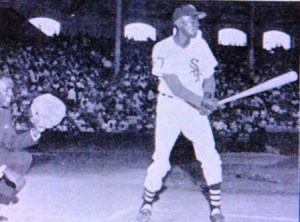
Paige at Comiskey Park in 1965–Chicago Cubs outfielder George Altman is the catcher.
Things began to look up in late July when the Cleveland Indians inducted Paige into the team’s Hall of Fame between games of a Sunday doubleheader with the Yankees; in front of the team’s largest crowd of the season: 56,634. According to United Press International:
“Satch tossed examples of his blooper, drooper and hesitation pitches to (former Indians teammate) Jim Hegan, now a Yankee coach and explained his philosophy of pitching thus: ‘Just take the ball and throw it where you want to. Throw strikes. Home plate don’t move.”
In August, he accepted an offer to pitch for and manage a team in Anchorage, Alaska called the Earthquakers. In reality, Paige simply went to Alaska for a short series of exhibition games, and had no intention of staying there—he was already booked to appear at the old-timers game scheduled in September to mark the first season of the Houston Astrodome. But he did his best to sell it as a possible long-term move. He told a reporter for The Associated Press:
“Lately, I’ve wanted to leave barnstorming baseball to settle down somewhat to help the sport. Anchorage seems to be the place to do it.”
In addition to his appearance in a handful of games in Alaska, his arrival in the state also resulted in a chance meeting that was reported in the press.
As a crowd of local residents gathered at the Anchorage airport to greet Paige, another plane arrived for refueling. It carried former Vice President Richard M. Nixon on his way to Tokyo. Nixon walked into the terminal while the plane was refueled, and when he asked about the crowd he was told they were waiting for Paige’s arrival. Nixon joined the line to greet the pitcher. The man who would be the leader of the free world in a little more than three years told a reporter from The Associated Press:
“I always like to meet celebrities.”

Nixon and Paige meet in Alaska
His commitment in Alaska over, Paige made it to the Astrodome on September 6. The two-inning game, featuring a team of “immortals” versus “Texas All-Stars,” was an incredible collection of legends—more than 50 former players participated; twelve were already members of the Hall of Fame. The Houston Post said of the player introductions:
“Joe DiMaggio, the Yankee Clipper, got a deafening cheer. So did Satchel Paige, peerless Negro hurler.”
The paper said the only others to receive a reception near that for Paige and DiMaggio were Dizzy Dean and native Texan Monty Stratton.

Paige in the Astrodome
Perhaps it was the reception in Houston that caused one of the letters Paige, and his wife and daughter had written months earlier to finally be answered.
Charles Oscar Finley, who made his fortune in the insurance business and bought controlling interest of the Kansas City A’s before the 1961 season, was the one who finally responded.
That the signing of Paige appears to have been a spur of the moment decision for Finley after reading about the reception in Houston, is supported by the fact that it was announced by the marketing savvy Finley at what The Kansas City Times described as a “hastily called news conference,” which Finley, who was in Chicago, did not attend.
He appeared with General Manager Hank Peters and told reporters “I thought they were kidding” when Finley called and offered him a contract.
He said he was ready to pitch and brushed aside questions about his age:
“I think I can still pitch and help this club. So what difference does it make what my age is if I can?”
Bill Veeck, who had signed Paige with the Cleveland Indians in 1948 and the St. Louis Browns in 1951, told The Times he hoped it wasn’t just a publicity stunt by Finley:
“I am hopeful he will be used as he should be—as a pitcher. Leroy should surprise a few people as he has for a long time.”

Veeck and Paige
The controversial Veeck, more than a decade away from his return to the game, told The Kansas City Star he blamed himself for the pitcher’s long absence:
“When I left Cleveland the first thing the new owners did was get rid of Satch. When I sold the St. Louis Browns (and the team relocated to Baltimore), the same thing happened. That’s nothing more than guilt by association.”
The signing of the 59-year-old Paige, who joined a team that included five 19 and 20-year-old pitchers who appeared in at least one game that year—Jim “Catfish” Hunter, John “Blue Moon” Odom, Ron Tompkins, Tom Harrison and Don Buschorn—inspired a short poem published in The Star:
“They’re either too
Young or too old,
When Charlie puts ‘em
In A’s Green and Gold.”
Papers across the country carried a photograph of Paige, seated on a chair, with one of Finley’s young pitchers, Catfish Hunter, on his knee. While the photo was straight from Finley’s marketing plan, the impact of one future Hall of Famer on another, forty years his junior, seems to have been real.
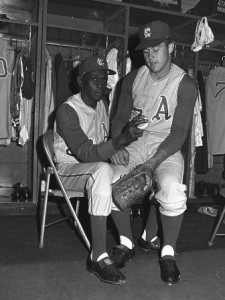
Paige and Hunter
The Star spoke to Paige about his pitching philosophy one afternoon as Hunter stood nearby. The paper said:
“Hunter listened intently as Satchel expounded his pitching theories.”
Paige was equally impressed with the 19-year-old, telling The Star:
“This young man has shown me a lot of poise. He has a great future in this game.”
The next two weeks were filled with pictures of, and stories about, Paige in a rocking chair, a nurse seated nearby, watching the A’s play, and while a “Satchel Paige Night” was scheduled, there appeared little chance the pitcher would be used as anything but a prop for publicity. Then Finley announced that his new pitcher would start on his night, September 25 against the Boston Red Sox.
What took place on the mound on September 25 has been written about many times. With his six children and wife Lahoma—pregnant with number seven—sitting in the owner’s box with Finley, Paige pitched three shutout innings, allowing just one hit—a Carl Yastrzemski double.
The only disappointment was the anemic crowd—just 9,289 Kansas City fans turned out to see a legend, the second largest crowd during that six-game home stand was 2,874.
As Paige took the mound in the fourth inning, A’s Manager Haywood Sullivan, who was not consulted before Paige’s signing or before Finley announced he would pitch that night, came to the mound to remove Paige. The pitcher walked off to a standing ovation.

Paige walks off the field with Manager Haywood Sullivan while Diego Segui warms up.
Paige returned to the clubhouse. The Star said:
“In the clubhouse he was down to his long underwear, and talking about helping the A‘s out of the basement when someone rushed in a and screamed, ‘Satch, they want you back on the field.’
“The lights were out. More than 9,000 matches flickered in the darkness, and on ‘Salute to Satchel Paige Night,’ they sang ‘Rockin’ Chair,’ ‘Darling I am Growing Old,’ and “The Old Gray Mare.”
After returning to the clubhouse, Paige was greeted by Finley, who called him “a real credit to the game.” Paige “shook the owner’s hand” and said “I want to thank you for bringing me here.”
Whether he truly believed it or not, Paige told reporters he planned to pitch again in 1965.
“Everybody doubted me on the ballclub. They’ll have more confidence in me now.”
He did not appear in another game but stayed with the club for the remainder of the season. Two days after his three-inning performance, he was with the team in Baltimore.
A discouraging word had not been uttered by Paige during his time with the A’s. Perhaps being in Baltimore—where his big league career effectively ended after Veeck sold the Browns—or maybe just the realization that a man capable of throwing three shutout innings at age 59 was not given an opportunity by a major league club the previous 12 seasons, changed that.
Lou Hatter wrote in The Baltimore Sun:
“Satchel Paige, the slender pitching ancient signed 2 ½ weeks ago by Kansas City, bared a deep-rooted wound here last night for the first time.”
Paige said to Hatter:
“You can put it this way. You can say I resent being overlooked by organized baseball all these years while I threw away most of my best years pitching for a barnstorming club…All they ask me, though, is how old am I. But nobody asks me why I stayed out of the major leagues for 15 [sic 12] years. That’s a long time isn’t it? That’s a lifetime for most professional players.
“Let me ask another question. When Baltimore bought the St. Louis ballclub, why did they turn me loose?
“When I went to the Miami club (again pitching for Bill Veeck with the International League Marlins) and was a top pitcher for three years (11, 10 and 10 win seasons with ERAs of 1.86, 2.42 and 2.95), how come nobody picked me up?…I know the answer, but I won’t tell that neither—like I won’t tell my age.”
Despite Finley telling reporters throughout September that Paige would return to the A’s in 1966, if not as a player, then as a coach, he was released in September. The next time he appeared on the mound at Kansas City’s Municipal Stadium, it was again as a member of the barnstorming Indianapolis Clowns.
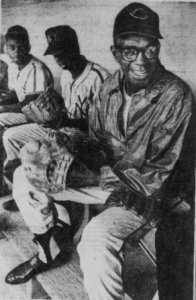
Paige back in Kansas City as a member of the Indianapolis Clowns in 1966.
Tags: Abe Saperstein, Astrodome, Bill Veeck, Blue Moon Odom, Boston Red Sox, Carl Yastrzemski, Catfish Hunter, Charlie O Finley, Cleveland Indians, Comiskey Park, Diego Segui, Dizzy Dean, Don Buschorn, George Altman, Hall of Fame, Hank Peters, Harlem Globetrotters, Haywood Sullivan, International League, Jim Hegan, Joe DiMaggio, Kansas City A's, Lou Hatter, Miami Marlins, Monty Stratton, New York Yankees, Richard M. Nixon, Rom Tompkins, Satchel Paige, St. Louis Browns, Tom Harrison, Wrigley Field

